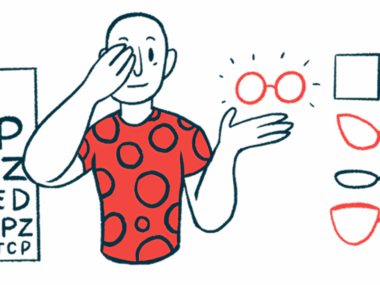Global Experts Agree on Criteria to Diagnose Optic Neuritis
However, consensus was not reached on how to treat the condition
Written by |

Researchers have developed a set of criteria to diagnose optic neuritis (ON) — inflammation in the nerve fibers sending signals to and from the eye — and identify whether it is caused by multiple sclerosis (MS) or other conditions.
The criteria, developed by an international group of specialists, are intended to facilitate an optic neuritis diagnosis, identify its cause, and help patients receive the right treatments sooner. Still, a consensus wasn’t reached on how the condition should be treated, and who might need longer-term care.
“This is an important international collaboration, which expands our understanding and classification of all types of optic neuritis across the world,” Clare Fraser, MD, one of the study leaders, said in a University College London (UCL) press release. Fraser is a neuro-ophthalmologist and professor at the University of Sydney’s Save Sight Institute, in Australia.
The criteria were outlined in a study, “Diagnosis and classification of optic neuritis,” which was published in The Lancet Neurology.
Optic neuritis can be caused by MS
When the autoimmune attacks that mark MS affect the optic nerve, this can lead to optic neuritis, where patients experience symptoms that range from pain to vision problems. Optic neuritis can also be caused by other conditions, including neuromyelitis optica spectrum disorder, another autoimmune disease with clinical similarities to MS.
However, there isn’t a global agreement about how to diagnose optic neuritis, and definitive criteria for identifying its underlying cause haven’t been established. This can lead to diagnostic delays that prevent patients from starting appropriate treatments in a timely manner.
To address this, an international team set out to develop a set of diagnostic and classification criteria to help prevent missed or delayed diagnoses of optic neuritis and its potential causes. More than 100 specialists from 60 countries — including neurologists, ophthalmologists, neuro-ophthalmologists, and neuroradiologists — collaborated to generate the criteria.
A Delphi process was used, which essentially means the experts completed several rounds of anonymous questionnaires — based on analyses of real-life clinical scenarios — to work toward a consensus definition.
This is an important international collaboration, which expands our understanding and classification of all types of optic neuritis across the world.
Diagnosis requires supporting data, such as imaging or blood biomarker tests
Ultimately, it was determined that clinical criteria for a diagnosis included vision loss in one or both eyes, reduced visual contrast and color vision, and a relative afferent pupillary deficit, in which a person’s two pupils respond differently to light input. Symptoms may occur with or without the presence of pain that worsens with eye movement.
A definitive diagnosis requires support from imaging or blood biomarker tests, with the number and type of tests depending on the clinical features presented by the patient.
As part of reaching a diagnosis, clinicians should also ask for a detailed clinical and family history from the patient and look for “red flags for an alternative diagnosis or for urgent treatment,” the researchers wrote.
To work toward the underlying cause of optic neuritis, a two-level classification scheme was developed. In the first level, a clinician should determine whether the diagnosis is likely to be relapsing, meaning symptoms of the condition will return multiple times, or monophasic, meaning it occurs only once.
“Typically, the disease course is monophasic in all optic neuritis that is not autoimmune in origin,” the researchers wrote. However, atypical presentations of the condition in MS and NMOSD can be monophasic.
Level two involves classifying optic neuritis subtypes based on their underlying cause using a large variety of anatomical analyses, brain and eye imaging, as well as immune biomarkers and clinical features. In MS, this includes features like lesions on MRI scans indicating neurological damage in multiple brain and/or spinal cord regions and evidence of antibodies in the spinal fluid.
Criteria will be subject to regular review
Overall, the study offers new avenues for identifying optic neuritis and its potential causes, but the criteria will be subject to regular review, the researchers noted. “Future validation studies will need to test and further optimise the sensitivity and specificity of present criteria for different optic neuritis subgroups,” they wrote.
“We hope our classification will lead to the identification of yet more immunological causes of optic neuritis and ensure uniformity in identifying sub-types of optic neuritis,” said Axel Petzold, MD, PhD, a neurologist, lecturer at the UCL Queen Square Institute of Neurology, and the study’s first author.
Generally, the experts agreed that a high dose of methylprednisolone, a corticosteroid, should be used to treat optic neuritis, with gradual tapering off, although there is no consensus about how fast the tapering should be. Moreover, determining which patients need long-term immunotherapy with other agents to treat relapses wasn’t established.
Ultimately, “consensus is needed on treating optic neuritis,” the team wrote. While the new criteria might aid in the design of trials to address this issue, it will be important that regional differences in treatment access are considered in the trial design, the researchers added.
“I’m hopeful that the criteria we have developed will lead to a consensus on how to design treatment trials for optic neuritis in the future,” Petzold said.





